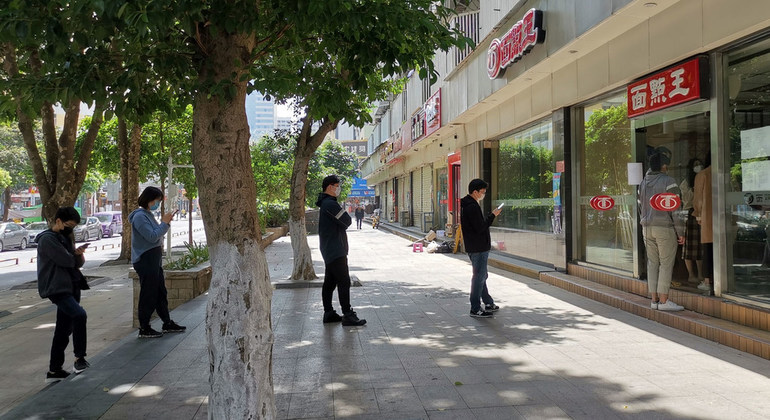The development comes as WHO Director-General Tedros Adhanom Ghebreyesus welcomed data showing that in the past 24 hours, China had recorded its lowest number of cases in more than a month (329), with 78,959 cases in total.
More than 36,000 people have also recovered from COVID-19 in China alone, WHO said.
Fear, rumour and stigma the greatest enemy
Speaking to the international press on Friday, UN chief António Guterres called on all governments to step up and do everything possible to contain the disease, without stigmatization, and respecting human rights, and appealed for solidarity, and full global support.
Echoing the words of Tedros, the Secretary-General emphasized the importance of preparation, rather than panic, and declared that the “greatest enemy right now is not the virus. It’s fear, rumors and stigma”.
Global spread continues
The rest of the world has continued to show an uptick in infections, however, with 4,351 cases confirmed in 49 countries and 67 deaths as of 6am in Geneva.
Tedros said that although the increase in the number of cases and affected countries in recent days was concerning, there was no evidence of the virus spreading freely in communities.
He added that 24 cases of infection had been exported from Italy to 14 countries and 97 cases had found their way from Iran to 11 countries.
“The continued increase in the number of cases and the number of affected countries over the last few days are clearly of concern,” he said. “Our epidemiologists have been monitoring these developments continuously and we have now increased our assessment of the risk of spread and the risk of impact of COVID-19 to very high at global level.”
First sub-Saharan case in Africa
In Nigeria, where the first case of infection has been confirmed and isolated, the UN agency said it had “great confidence” that the country could contain the virus.
This was thanks to the fact that the country has had success in dealing with other disease outbreaks, such as Lassa fever and measles – and it had invested significantly to do so – said WHO’s Dr Mike Ryan, head of WHO’s Health Emergencies Programme.
Currently, more than 20 vaccines are in development around the world, along with several therapeutic medicines; the first results were expected within weeks, Tedros said.
Personal responsibility is critical
In the meantime, the best thing people can do is to be diligent about their personal hygiene, the UN health agency chief insisted, and look out for symptoms, which include a dry cough and fever, rather than a runny nose.
The preventative health advice is particularly important with regard to handwashing with soap or alcohol gels, sneezing or coughing into a tissue or the crook of your arm, and staying at home if you feel poorly.
Explaining the implications of the latest threat assessment, Dr Ryan said that while it was the highest level of alert, the aim was to encourage countries to act, rather than alarm them.
“We need to keep this virus slowed down, because health systems around the world – and I mean North and South – are just not ready…the risk of spread has clearly increased but the risk of impact has also increased because of what we see in health systems around the world.
Time to act is now
“It’s time to prepare, it’s time to get ready. It’s time to act and people need to take a reality check now and really understand that an all-of-government and an all-of-society approach (is required). It’s time to act.”
Echoing the need for aggressive action such as that implemented by China, WHO’s Dr. Maria Van Kerkhove noted that other countries which had followed its lead has seen similar successes in containing the virus, resulting in valuable breathing space for their health systems.
“In Singapore, you look at what has happened in terms of the cases they have had; they’re now seeing a rapid decline in cases. You see what happened in Nepal, there was an onward transmission there. You see what’s happened in Viet Nam, where there were some cases and now there’s no further cases”, she said. “These are all examples of where countries have been successful in containing this.”
She added: “The point is, the earlier we act…and how robustly in those initial cases, will determine if you’re dealing with a number of cases, one case, or a small cluster, or if you’re dealing with hundreds or thousands.”



